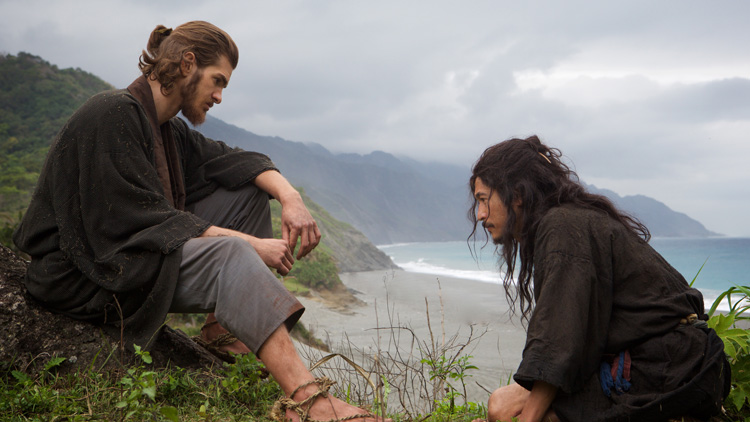
LATEST STORIES:


In a lot of ways the films of 2016 helped to strengthen and reflect the “worst year ever” denomination that so many have assigned it. That’s not to say that the films were bad, but it did seem like there was a pervading sense of sadness and futility to so many of this year’s most talked about films. From the inescapable grief explored in Manchester By The Sea to the bittersweet fatalism of Arrival to the sense of a world slipping from one’s influence in 20th Century Women. Heck even the year’s most feel-good love story La La Land was injected with a current of melancholy. So after all of the difficulties of 2016 why not start 2017 off with the newest film from living legend Martin Scorsese? That’s sure to be fun right? …Right?
Silence, the newest film from the beloved American director, takes us to the shores of 17th Century Japan where two Portuguese Jesuits arrive on a mission to investigate rumours regarding their mentor Father Ferrera (Liam Neeson) who went missing years earlier and supposedly renounced the faith. The two men, Sebastião Rodrigues (Andrew Garfield) and Francisco Garrupe (Adam Driver) are young, eager, and excited at a chance to have their faith tested by this strange new land. The country is not as excited to see them however, as Christianity is outlawed, and any Japanese found practising faces violent persecution by the inquisitor Inoue Masashige (Issey Ogata). This persecution involves forcing the believer to stomp on an image of Christ, with brutal retribution for those who refuse.
Adapted from Shūsaku Endō’s novel of the same name, the story is a simple one, following the two padres until they are separated, and then focusing on Garfield’s Rodrigues as he is forced to witness the repeated torture of the Japanese Christians on his behalf. It is a slow, brutal and engrossing study of the nature of faith. Scorsese, a self-proclaimed “lapsed Catholic”, is clearly fascinated by the big questions at the heart of Christian belief and does his damnedest to make the audience face them as well. That means dispensing with cinematic “distractions” like music or his signature tracking shots, and instead planting us into the tattered sandals of Rodrigues and leaving us there. Though the story is occasionally helped along by voice overs from letters either read or written by Garfield’s character, the action on screen largely plays out with a quiet realism.
It may be a stripped-down style for Scorsese but there is still great talent on display. Rodrigo Prieto’s cinematography captures the stark landscape of coastal Japan with a painterly beauty. Andrew Garfield and Adam Driver deliver focused and committed performances in the lead roles, with Garfield being the stand out (though granted he has the larger role), and Liam Neeson – though relegated to the film’s final third – is his usual sturdy self as the humbled Father Ferrara. The film’s most interesting performances however, are delivered by the Japanese actors. Tadanobu Asano is all suave persuasion as the inquisitor’s interpreter who delivers reasoned arguments to Rodriques over Christianity’s impossibility in Japan, while veteran actor Issei Ogata gets as close to “entertaining” as anyone in the film as the sinister and saccharine Inoue.
On a broader scale the film provides a fascinating look into a unique time in Japanese history. Though it features a healthy amount of torture by the Japanese officials, they aren’t treated as two-dimensional villains, but rather protectors of their country. As viewers we’re conditioned to cheer for the protagonist, but here the Jesuits are clearly invaders on a foreign soil, and however deeply they may believe in their religious “truth”, to the Japanese officials they are seen as a threat to national unity.
For many, Silence will be a laborious viewing experience. Scorsese clearly wants the viewer to suffer alongside his protagonists, and for those who don’t go to the movies to “suffer”, well, be warned. Due to the fact that very little in the way of commentary or exposition is provided in the film, the main task of interpreting the events is left to the individual. It’s an odd experience having so much of the onus put on you while watching a movie, especially one that clocks in at two hours and forty minutes. It truly asks you to enter the mind of its protagonist and see things as they would have at the time. Rodrigues is a man taught to glory in the ideas of martyrdom and suffering, but upon seeing such suffering he finds no glory in it. He struggles to find guidance from a silent god, and we struggle to find guidance from a silent director. I recommend approaching the film like a missionary landing on foreign land: open yourself to it. Though you may get scared off, you may also find something incredible.
Reviewed by Evan Arppe.